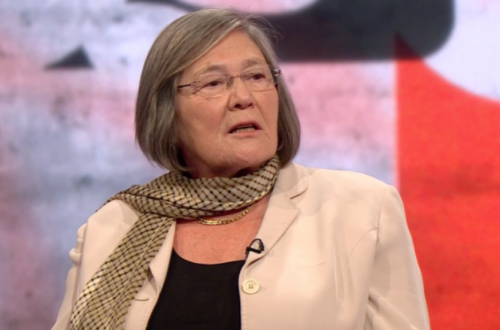In Aleksandr Sokurov’s mesmerizing 2005 film the Sun, the Shōwa Emperor was shown to be an unworldly manchild more interesting in dissecting fish than what was going on outside. In an immediate twist with the opening scene, this was shown to be American Occupation, although the Red Army was advancing on the home islands.
As he retreated back to his room after presenting himself to his new Shōgun for the first time, the incredulous Macarthur said “that was an Emperor? He’s like a child”. Also present were members of Macarthur’s entourage, all of whom had to be shooed away like curious children; including, to my surprise, a Nisei GI acting as interpreter. At the time, I assumed he would have been assigned to intelligence or listening duty, instead of front-line service in the Far East: unlike members of the all-volunteer 442nd Regiment in the European theatre which became known as the Xmas Tree Regiment because of the sheer number of decorations it received, including those presented posthumously to families still subject to internment (such as George Takei’s).
Not so, as the reported by the Army Times passing of the last Nisei to have served on and beyond the front-line in the Far East shows:
Roy Matsumoto, who served with the famed Merrill’s Marauders during World War II and was later inducted into the “Ranger Hall of Fame,” has died at 100, according to his daughter Karen.
[…]
Matsumoto was born in Los Angeles on May 1, 1913, and went to Japan at age 8 to be taught the Japanese language and customs by his grandparents, his daughter wrote. He returned to the U.S. when he was 17 and was interned along with 110,000 Americans of Japanese descent following Pearl Harbor.
He enlisted in the Army in the fall of 1942 while living in an internment camp and volunteered for a “hazardous mission,” his daughter wrote. He got his wish when he joined Merrill’s Marauders, a group of about 3,000 American GIs who operated deep behind Japanese lines in Burma.
In, Nisei linguists: Japanese Americans in the Military Intelligence Service during World War II (2006) James C. McNaughton describes how Matsumoto was one of 14 Nisei interpreters in Burma:
There were fourteen Nisei Interpreters serving US Army in Burma. All fourteen were awarded the combat Infantry Badge and Presidential Unit Citation. Four were awarded field commissions by december, including team leader Sergeant Mitsukado, who wrote to a friend that he was the “most surprised soldier” in Burma. “Wearing the bars feels great but I miss the company of the boys who went through hell with me. they’re a great bunch.” three others returned to the United States to attend Officer candidate School.
From the Merrill’s Marauders’ official newsletter there’s an account of what presumably was Matsumoto’s act of subterfuge:
Some of the most valuable men in our outfit were the Nisei Japanese interpreters not with battalion and regimental headquarters but with a platoon in contact on the perimeter. The Japs talk loudly sometimes before they attack. On several occasions the Japanese interpreters told us exactly what the Japs were shouting and enabled us to get set for an attack from a certain direction. Once an interpreter caused the Japs to attack into a trap by shouting orders at them.
From the Army Times article:
Matsumoto was responsible for listening in on Japanese communications. During the siege of Nhpum Ga, he found out the Japanese were planning an attack, according to his citation for the U.S. Army Ranger Hall of Fame. That allowed the Marauders to prepare and repel the first Japanese attack, the citation says. Matsumoto then used his language skills to lure more Japanese troops into the kill zone.
“Sgt. Matsumoto stood up and exposed himself to enemy fire, while shouting ‘Charge’ in Japanese as if he were a Japanese officer,” Karen Matsumoto wrote. “Marauders opened fire, and the battalion was saved from certain annihilation with no casualties on our side.”
Although prior to the attack on Pearl Harbour, military intelligence had been recruiting Nisei for linguistic training, afterwards bans on their serving in combat roles and mass internment of them and their Issei relatives were implemented. From the loyalty of men like Matsumoto, the top brass came to question the crass stupidity of these policies.
In his memoirs, Admiral Chester Nimitz recounted “Before World War II, I entertained some doubt as to the loyalty of American citizens of Japanese ancestry in the event of war with Japan. From my observations during World War II, I no longer have that doubt”.
Again from the Army Times:
“Back in the 70s, when he first attended one of the Merrill’s Marauders reunions with his wife and oldest daughter Karen, he didn’t know what an American of Japanese descent could expect,” Passanisi wrote in an email Thursday to Military Times. “He was overwhelmed with the attention, gratitude, and respect showered upon him. His daughter Karen was awed at the newly learned fact that her father was such a hero. She exclaimed: ‘He never said anything; I never knew any of this.’


